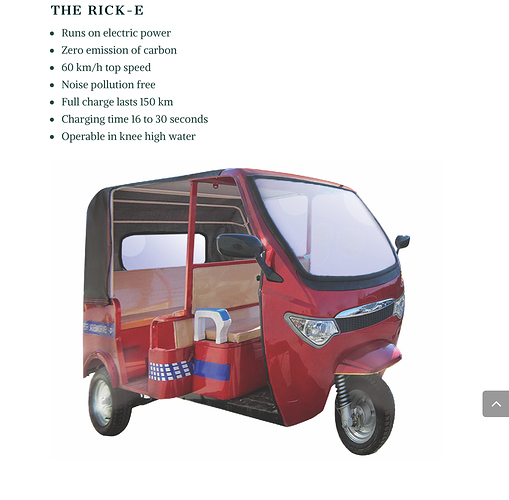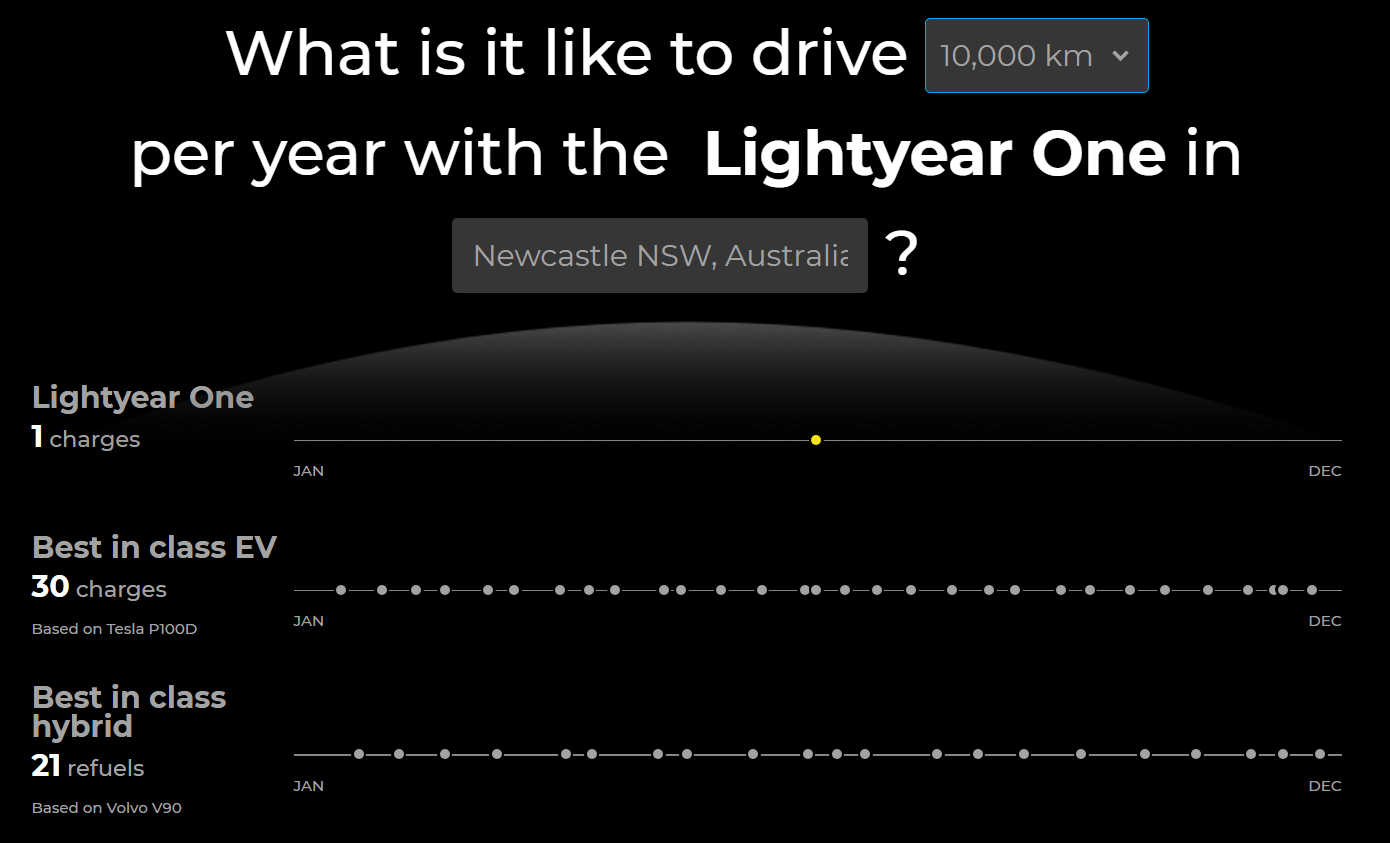In my case, it was four buses. Even that only cut my driving down to 30 km/day. Fortunately, my employer was flexible enough to work with the timetable. Even so, after 16 years, it got the better of me. I retired early. And yes; relocating was never an option.
Now here’s an alternative:
Car sharing systems would be an ideal use for its passenger pod configuration to provide local and ‘last kilometre’ travel options, whilst autonomous versions would have uses limited only by the imagination. Their website shows various ideas from mobile autonomous stores to waste carriers and delivery vehicles.
The comments are not exactly supportive:
For Japan & Korea where they have very small Wind & Solar resources, I can see why their governments subsidises this technology. But for Australia & practically everywhere else Hydrogen passenger cars make no sense.
Toyota have delayed importing them to australia until some one installs Hydrogen stations. Hyundai and Toyota just want to produce them, flog them off to dealers who will have to find buyers and not worry about the infrastructure to fuel them. The Model 3 and Model Y are coming in great numbers. Charge them at home.
I wouldn’t necessary believe the comments…as some are factually incorrect. For example, stating tbat the German’s are following Telsa lead instead of exploring hydrogen is incorrect. European companies like BMW are spending considerable sums on hydrogen research, like the Japanese and now Koreans, as they see hydrogen as part of the future fuel mix.
There has been a tendency within the media and advocates pushing one form of future technology to believe marketing hype of one particular sector rather than looking at the bigger picture.
Indeed. ![]()
An interesting experiment:
A stand alone DC EV-charging skid powered by diesel generator for remote locations with inadequate power delivers fuel consumption results are very comparable but on most occasions better than equivalent diesel powered passenger vehicles.
In other words, using a diesel generator to charge EVs can be more efficient and less polluting than fuelling the vehicles directly with diesel.
I knew there had to be a reason for the “doof-doof” of some car sound systems!
Have a vegan in the household?
Ever wondered what to do with all those left over walnut and almond nut shells, peanut husks and neighbours wayward pine cones? Don’t throw them back over the fence. They are a great Source of renewable energy?
The great British truck maker Thornycroft saw the opportunity more than a hundred years past. However the Thornycroft truck H Lasseter took into the vast deserts of the outback of Australia was more conventionally powered. Each dreamed of success in their endeavours, and failed. More recent, as a business Thornycroft ceased to exist in 1977.
I bet you thought that the car boot was for luggage. In some suburbs they are given over to their proper use, the base speaker enclosure.
In my case, it is the Bose speaker enclosure. ![]() ( I’m not a great fan of Bose; I imported the car secondhand, and had to accept some compromises )
( I’m not a great fan of Bose; I imported the car secondhand, and had to accept some compromises )
Sitting in the well where the spare wheel & tyre would normally reside, is a subwoofer module. If I ever get a flat tyre, I’m meant to make do with the little compressor and accompanying bottle of ‘goo’.
Of course, if I damage a wheel rim, then I’ll be stranded, and eaten by drop-bears and feral cats before help arrives…
Fossil fuel advocates often talk about the electricity needed to run electric vehicles (EVs)
(or even the electricity needed to make liquid hydrogen or liquid ammonia in order to have portable hydrogen fuel)
Of course it is better when this electricity is generated sustainably (as more and more of it is each day)
but they don’t factor in the electricity used to mine, transport, refine, transport again, and deliver fossil fuels.
To get the fuel to an internal combustion engine (ICE) vehicle uses a bit over 2.1 kWh per litre, so a vehicle consuming 10 litres per 100 kilometres is also consuming 21.1 kWh per 100 kilometres.
At home we have three vehicles (soon to be only two):
A consumes 20 litres and 42.3 kWh per 100 km
B consumes 9 litres and 19 kWh per 100 km
C consumes 17 kWh per 100 km
Yes mining ores (and transport, processing, etc) also consumes energy, but this is done to make things that stick around for quite a while - compared to bulky fossil fuels that are mined to be burnt.
The electricity consumption figures do not take into account grid losses over distance - but these would apply to both electricity for getting fuel to ICEs and electricity for EVs.
2 million homes out to 10.1 million residences per ABS is a great start.
Still a long way to go if you are charging your EV at home or making your own hydrogen fuel for EVs to be dominant?
Given the uncertainties around future feedin tariffs and calls for investment into upgrading the grid to platinum plated to handle solar:
It may be better to find other ways to use your surplus solar at home.
12,000km pa is between 2,400 and 4,000kWh of energy (7-11 kWh per day) from a solar system for a typical EV 3-5km per kWh.
Hydrogen is currently not an off the shelf option for the average home owner. Although anyone who can afford a top of the range 4WD is likely able to fund a small Nissan Leaf!
Two innovations for the price of one?
http://rick-e.com/home.php
http://rick-e.com/specifications.php
Firstly the EV uses a super capacitor based energy storage system, which offers a million cycles at 100% dod and fast charging in less than 60 seconds if you have the power.
Technically from reviewing other sources on the technology the stored energy density per kg may put this system in the heavy weight class. The rapid charge mode Is unlikely to achieve the 99% charge discharge cycle efficiency quoted for the storage capacitors, with very high losses at high charge rates suggesting closer to 50% than 99%? For a more usual charge rate of one to ten hours the 90+% appears to be supported by other literature.
Second innovation is that this EV will be affordable when compared to a Tesla or Leaf etc!
Of course it is not likely that the relatively low cost EV being promoted will see light of day in Australia. Without a boot, or roo bar option it is limited, although it comes standard with natural air conditioning! 
P.s. Don’t mention ADR’s. Surely any vehicle that is no faster than a bicycle with a tail wind only needs a light, bell, and foam helmet to be safe? 
Old technology…
I remember as a child seeing a news article in the 1970s of a fellow in Melbourne or somewhere else who drove a timber powered steam car. I suppose the problem will be the emissions and also having to carry enormous amounts of nut shells to travel any distance.
Eating nuts is good for you! Mostly?
Not a solution if you have a nut allergy. ![]()
We discussed steam powered, many posts back. Typically the old steamers - cars used liquid fuel eg petroleum based products and not wood or coal. Although there were the old road rollers, steam traction engines and steam trucks including early Foden, etc that ran on coal, or wood, or coke.
Wikipedia has an interesting view on the development of these vehicles and the use of the alternative fuel “coal” up to 950,000t pa as imported oil was heavily taxed.
The use of coal or the partial reduction and gasefication of cellulose based materials for fuel for ICE may not make a comeback.
Although there are options to produce low carbon combustible fuels from both these sources and to sequester or collect the residual carbon.
-
Innovation was key in the past. We used what was practical and available. Eg Keeping the ICE when you can produce a suitable fuel sourced from a renewable eg biofuels is a productive step away from the current open ended combustion of petroleum products.
-
Taxation of energy is a powerful tool. GB held onto it’s coal powered Foden and Sentinel trucks (new manufacture) into the 1930’s. This was long after Petrol and Diesel engines were the go to for such vehicles. It was the high rate of taxation on imported oil that made coal king.
As demonstrated in GB the Government of the day can sway outcomes to favour any alternative energy.
Australia has a national electricity newtork/grid (which is being improved in various ways).
Getting access to the grid in order to charge an EV is not difficult in most of the country. And in places off the grid, bodies such as AEVA are working with locals to install chargers powered by local solar and even diesel generators.
Many remote charge points are on three phase AC 32 amp circuits (which take any Australian standard 5 pin “large” 3P plug). 3P 32 amp charging is much faster than plugging into a single phase 10 amp “normal” power point.
An example of how the existing grid supports EV charging is the work done by Qld government’s ERGON to install fast DC chargers from Coolangatta to Cairns.
Here’s an alternative:
I don’t drive much these days. I plugged in my annual driving distance and the nearest regional city.
Recharging once per year. Hardly seems worth the effort.
Creative and attractive concept. No go for commuters with an undercover car park who use the Lane Cove tunnel everyday to go to work? ![]()
Although there could be a fight in the future to see who gets to park on the open top floor of the parking station? Premium parking in the sun!![]()

